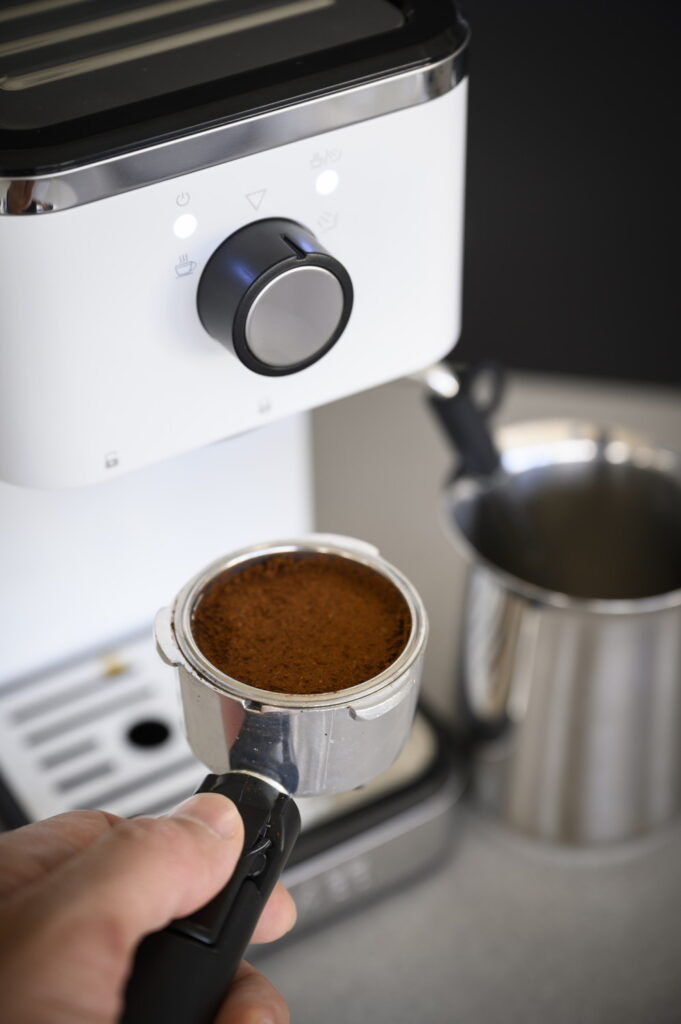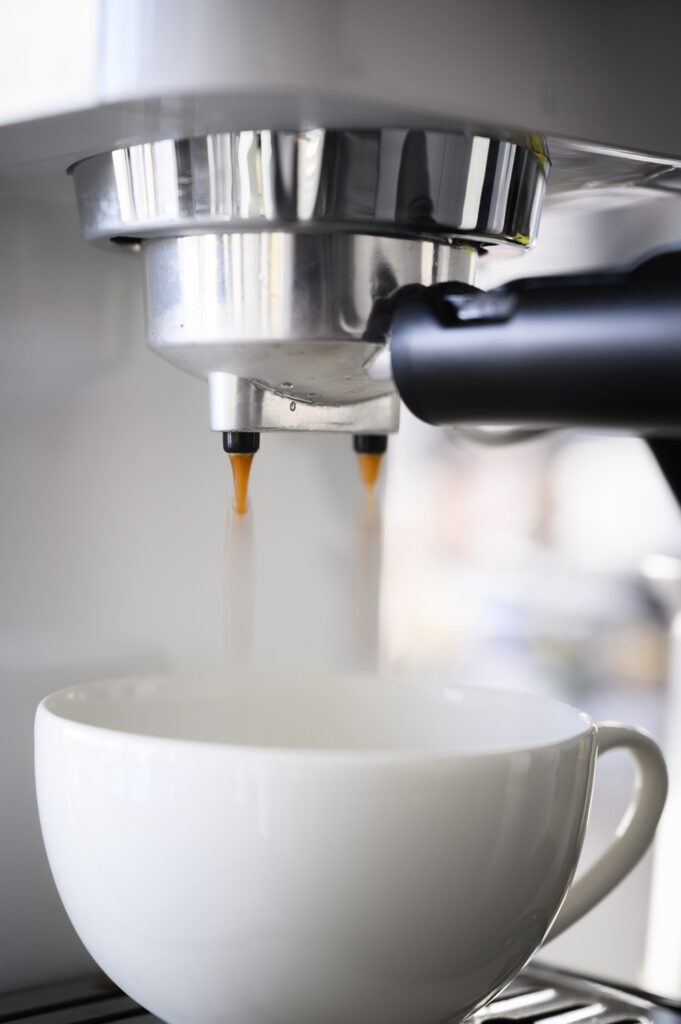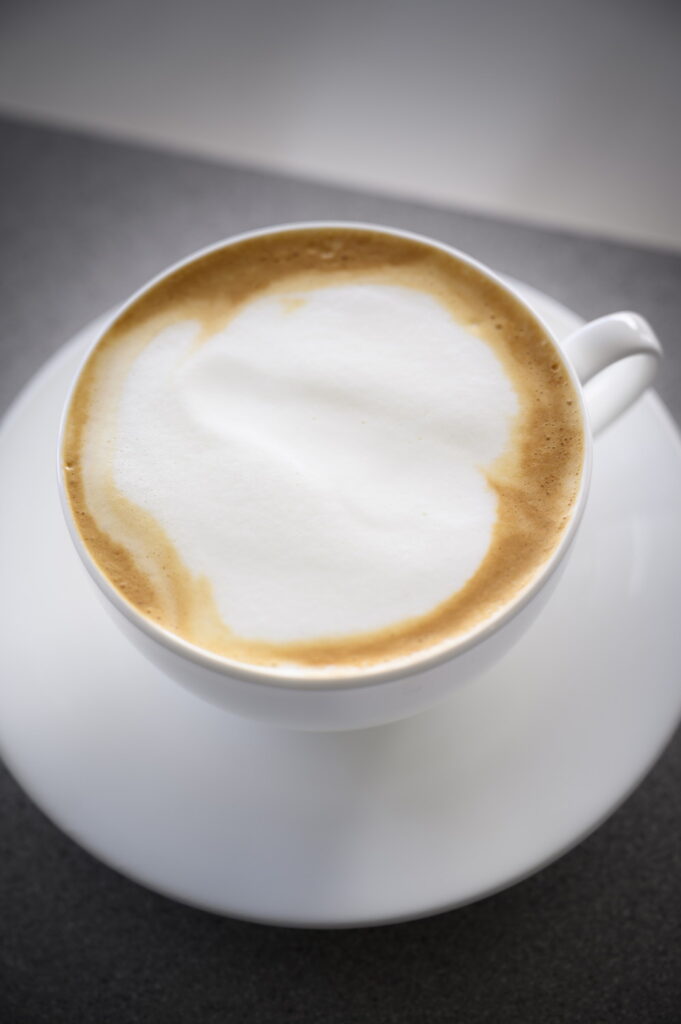UPDATE July 4th, 2020: My initial enthusiasm about the Salita experienced a damper at the beginning of the year when the machine stopped working. It took a while until I got a new one, but that worked well for a longer time. In the meantime, I have sold it because my coffee ambition has risen above the capabilities of the little machine. I would still recommend it to ambitious beginners because of its relatively low price. I must say, however, that for more money, you really do get more.
As an airline pilot, I travel around the world. Not only in Italy, but also throughout Asia and North America, I look for the best cafés, drink a cappuccino and – when I find small, top-notch roasteries – bring back unique beans roasted in small batches. Then I’ll enjoy espresso and cappuccino at home, the simple but effective references for coffee, barista and machines: How are the beans (origin, roast, grind) and the milk foam (creamy, thick but still light)?
Following a call for test users on Instagram, I was chosen as one of fifty people that were given the new entry-level Graef Salita portafilter machine and coffee grinder CM 702 free of charge to put them through their paces for four weeks. At the end of this time, we had the choice of returning them without any other obligations, or of keeping them in exchange for an honest review and payment of 99 €. As you are reading this, it is evident that I was happy enough to tell you all about the pros and cons of the Salita and Graef’s coffee grinder.
 For good coffee, there is only one option: as fresh as possible. For the test, Leuchtfeuer Coffee in Hamburg kindly provided two 250 g bags of Espresso, the somewhat milder and fruitier Sandbank as well as the more full-bodied and chocolatey Waseberg. Both are blends that forgive mistakes – both the user’s and the machine’s. I prefer beans that consistently deliver 8/10 quality than ones that can reach 10/10, but only make it to 6/10 with the tiniest of mistakes. I receive the coffee only a few days after roasting. It is supposed to keep for half a year in the closed bag, but I wouldn’t do that (and it won’t happen, either). Once the bag has been opened and the beans are in the grinder, they should be consumed within two weeks. Keeping ground coffee is not an option: it oxidizes to the exclusive disadvantage of quality.
For good coffee, there is only one option: as fresh as possible. For the test, Leuchtfeuer Coffee in Hamburg kindly provided two 250 g bags of Espresso, the somewhat milder and fruitier Sandbank as well as the more full-bodied and chocolatey Waseberg. Both are blends that forgive mistakes – both the user’s and the machine’s. I prefer beans that consistently deliver 8/10 quality than ones that can reach 10/10, but only make it to 6/10 with the tiniest of mistakes. I receive the coffee only a few days after roasting. It is supposed to keep for half a year in the closed bag, but I wouldn’t do that (and it won’t happen, either). Once the bag has been opened and the beans are in the grinder, they should be consumed within two weeks. Keeping ground coffee is not an option: it oxidizes to the exclusive disadvantage of quality.The Graef machines are quickly set up, the grinder filled and the first positive surprise comes when switching on the Salita. While larger portafilter machines require 15…20 minutes until they are at temperature, the status light of the test machine shows it’s ready after just one minute. So let’s go! To begin, I grind eight grams of Sandbank directly into the portafilter. The grinder has levels from 1…25, fine to coarse. For espresso, I choose a fine setting between five and ten. The grinding process is pretty loud and a part of the ground coffee misses the portafilter, but it does look uniform. The plastic accessory tool that has a measuring spoon at one and and a flat disk meant as a tamper on the other end will probably the first part to be replaced by something more solid. But for now, it does what it’s meant to do. To attach the portafilter to the Salita, it’s necessary to hold the machine with the other hand. It is not only compact, but also very light. This has the advantage of being able to easily stow it away when not in use, but also makes it possible to unintentionally move the machine while using it.
 I turn the knob on the face of the single boiler double use machine to the left, the brew starts with a rhythmic pumping and a thin brown liquid quickly flows out of the portafilter. I definitely need to grind finer and I can tamp the ground coffee with more pressure. It doesn’t take long for me to find the optimum for espresso at grind setting five and about 8…10 kg of tamping pressure. Now I get a delightfully oily coffee. It still flows faster than the desired one milliliter per second, but displays an incredible crema! Unfortunately, a finer grind or higher tamping pressure quickly leads to the flow of coffee being reduced to a labored drip. Additionally, on removal of the portafilter, a muddy rest presents itself instead of the desired dry “puck”. This shows one weakness of the little Salita: It seems to lack the brew pressure of more sophisticated machines. It doesn’t need it, though, after all it costs only a tenth of what the discerning user pays for those. What counts for me is the result that flows into the cup, and that is surprisingly good!
I turn the knob on the face of the single boiler double use machine to the left, the brew starts with a rhythmic pumping and a thin brown liquid quickly flows out of the portafilter. I definitely need to grind finer and I can tamp the ground coffee with more pressure. It doesn’t take long for me to find the optimum for espresso at grind setting five and about 8…10 kg of tamping pressure. Now I get a delightfully oily coffee. It still flows faster than the desired one milliliter per second, but displays an incredible crema! Unfortunately, a finer grind or higher tamping pressure quickly leads to the flow of coffee being reduced to a labored drip. Additionally, on removal of the portafilter, a muddy rest presents itself instead of the desired dry “puck”. This shows one weakness of the little Salita: It seems to lack the brew pressure of more sophisticated machines. It doesn’t need it, though, after all it costs only a tenth of what the discerning user pays for those. What counts for me is the result that flows into the cup, and that is surprisingly good!After the espresso, I move on to the second function of the Salita, the steam wand. It has a part meant to auto froth the milk, but I fail at using it, so I take it off and use the spout “solo”. I recommend this to anyone desiring fine-pored, creamy millk foam. The internet is full of video tutorials showing how it’s done and I really think it’s not rocket science. After draining condensation from the steam wand, I dip it into the milk and turn the knob on the Salita to the right. It takes 5…10 seconds, then the steam starts to fizzle. At this point, the compact and simple design becomes evident again. Frothing and heating the milk takes about a minute in total. But again, I come to the same conclusion as with the espresso: The result counts and many a café would be well advised to deliver one like it. I rarely experience such a fine-pored, velvety milk foam!
 Cleaning the machines is fast and straightforward. Between brews, I only clean the portafilter with a brush, after use I take it apart and rinse it with warm water. The water tray of the Salita can be removed and cleaned quickly. Once a week, it is recommended to clean the grinder. This requires a few more steps, but is also done in five minutes.
Cleaning the machines is fast and straightforward. Between brews, I only clean the portafilter with a brush, after use I take it apart and rinse it with warm water. The water tray of the Salita can be removed and cleaned quickly. Once a week, it is recommended to clean the grinder. This requires a few more steps, but is also done in five minutes.Depending on who you ask, a coffee aficionado will get the recommendation to spend around 2500 € for a complete outfit including portafilter machine, coffee grinder, tamper and small accessories. For a tenth of that sum, you can buy the Salita and CM 702, which have street prices around 20% less than the list prices of 220€ and 110 €, respectively. I conducted my test als a discriminating user and compared the entry-level machines to the ones that I would like to own, but cannot or do not want to afford. My conclusion: The prices may be entry-level, but the machines are worth more than that! If you desire a result at home that will make you cold-shoulder 90% of all cafés in the future and are willing to accept a compromise on noise level and water pressure, the combination of Salita and CM 702 is an excellent deal. If you want a machine now, I have a 10 € coupon for you, valid in the Graef online shop: “Salita10-ulrichbeinert”. I do not profit from this coupon, I’ve already got my machine. It is valid until February 29, 2020.
My particular thanks go to Leuchtfeuer Coffee for the coffee beans for this test. Their customer service is amazing, their advice hits the bull’s eye and the coffee is sensational! I can only recommend ordering coffee from this small, top-notch roastery!

